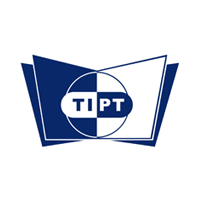
Most people are aware of the role that sanitation plays in our lives. From preventing and removing bacteria to improving health and wellbeing, everyone can recognize the importance of practicing appropriate sanitation on a daily basis.
However, the importance of cleanliness becomes much more impactful within the pharmaceutical industry, where a range of activities and potential hazards need to be taken into account in order to ensure that proper sanitation procedures are being implemented.
For those who want to know how to administer effective and adequate cleaning procedures, keep reading to learn more about sanitation standards in the pharmaceutical industry.
The Importance of Sanitization in the Pharmaceutical Industry
When it comes to maintaining the quality standards of pharmaceutical products, professionals need to consider certain sanitation factors and ensure that they are being upheld by proper hygiene regulation.
As outlined by Health Canada, individuals who work with pharmaceutical products must adhere to a written sanitation program that is implemented under the supervision of qualified professionals. This program outlines different cleaning procedures that are required in any environment that carries out the development of drugs.
However, it is not enough to simply implement a sanitation program and assume it has been executed. Instead, quality assurance professionals must monitor their workplace on a continuous basis to evaluate whether or not the program is working sufficiently. The process requires thorough observation and validation, especially in instances where leftover material or residue are likely to diminish sanitation quality.

Graduates of a pharmaceutical program learn to provide and assure safety within these environments and confirm whether their organization has complied with hygiene regulations. Such responsibilities include guarding against the impact of allergens, microbiological issues, and pest activity, as well as ensuring employee and product safety through careful examination. If not administered correctly, inadequate sanitization programs within the pharmaceutical industry can lead to regulatory action against a company.
Developing Proper Sanitation Guidelines in Pharmaceutical Quality Control Environments
There are a number of responsibilities for pharmaceutical quality control professionals to consider when it comes to monitoring employees and overseeing the drug approval process. Making sure employees are washing their hands adequately and frequently before and after handling different equipment and raw materials is a priority for sanitation regulations. In addition, equipment and other materials need to be thoroughly sanitized, checked for any remaining residue, and approved in order to ensure safety and prevent contamination.

Other protective measures must also be taken into account before personnel come into direct contact with products. Any solid, liquid, and gas waste that has been removed must be disposed of in a safe and hygienic manner. Establishing a clear area that is designed to house any contaminants safely is an appropriate practice for eliminating any harmful materials and preventing any form of contamination.
By following guidelines and ensuring that adequate hygiene will be practiced by employees and other personnel, the possibilities of hazards or other malpractices within the drug development process will be limited and hopefully even eliminated.
Are you interested in obtaining a quality control diploma?
Contact the Toronto Institute of Pharmaceutical Technology for more information about our programs.
